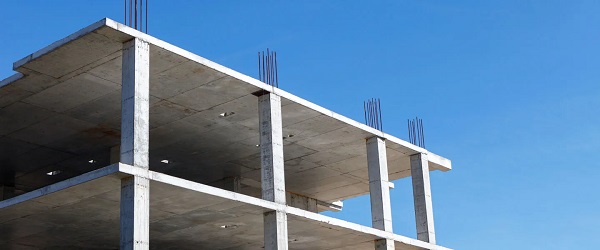Business
Ontario’s housing mess bad news for Canadians across the country

From the Fraser Institute
By Jake Fuss and Austin Thompson
According to new data from CMHC, homebuilding in Ontario plummeted in the first half of 2025 compared to prior years, making Premier Ford’s target of 1.5 million new homes by 2031 look increasingly farfetched. The weak numbers also undermine the Carney government’s pledge to double national homebuilding by 2035—a goal that was already very unrealistic. But the failure to increase homebuilding levels in Ontario does more than tarnish the reputation of politicians who make promises they can’t keep—it frustrates progress towards housing affordability in Ontario and across the country, harming Canadians who are priced out of the housing market or struggling to pay the rent.
In the first six months of 2025, construction began on only 27,368 new homes in Ontario—a staggering 25 per cent drop compared to the same six-month period in 2024, and 35 per cent below the first half of 2023. In fact, Ontario saw more housing starts in the first half of 2020 (33,588) despite disruptions caused by the COVID-19 pandemic.
More broadly, from 2022 to 2024, Ontario averaged only 86,650 housing starts each year—far short of the 150,000 starts per year required to meet the Ford government’s target of 1.5 million new homes by 2031.
Across Ontario’s municipalities, homebuilding trends vary significantly. Some cities have achieved notable growth—for instance, Ottawa recorded 5,150 housing starts in the first half of 2025, an 82 per cent increase compared to the same period last year. Others have seen construction nearly grind to a halt. In Guelph, just 46 new homes were started in the first half of the year—a 76 per cent drop from the same period in 2024. And Toronto recorded a paltry 12,575 housing starts in the first half of this year—a 44 per cent decline from the same period in 2024. Given its size, Toronto’s poor performance is especially consequential.
While building more homes remains a challenge across much of Canada, the particularly sharp decline in Ontario undermines national progress. Again, in the first half of 2025 housing starts in Ontario fell by 25 per cent compared to last year. Meanwhile, the rest of Canada saw a 17 per cent increase in the first half of 2025. In absolute terms, 9,003 fewer homes were built in Ontario relative to last year while 12,921 more homes were added in the rest of the country. That’s a problem for all Canadians looking to buy a house, because as the country’s most populous province, Ontario’s homebuilding slowdown has nearly cancelled out the gains made elsewhere.
In other words, the trends in one housing market can have spillover effects in other markets. When the country’s largest province stumbles, it drags national progress down with it. The consequences ripple outward—people priced out of Ontario drive up housing costs elsewhere. Sky-high prices in economic hubs such as Toronto push workers away from where jobs are most plentiful. And inflated housing costs feed household debt, leaving Canadians more exposed in the next economic downturn.
This is all happening despite billions of taxpayer dollars being spent on initiatives meant to boost homebuilding. In this year’s provincial budget, the Ford government earmarked an additional $400 million for the Housing-Enabling Water Systems Fund (which helps expand water systems for new housing development) and the Municipal Housing Infrastructure program (on top of the $2 billion the government plans to spend on these two programs until 2027). The Ontario government will also spend $325 million (over seven years) on a joint project with the federal government and City of Toronto for the waterfront revitalization plan, which includes new housing development. This spending is helping drive major increases in the province’s debt, while barely moving the needle on housing supply.
Of course, housing costs depend on supply and demand. The demand side, fuelled mainly by federal immigration policy, remains out of the Ontario government’s control. But Ontario and its municipalities can help improve housing supply—unfortunately, they have instead allowed significant barriers to persist. For example, the Ford government has decided not to allow four-unit homes on residential lots, ignoring a key recommendation of its own Housing Affordability Task Force. And housing developers in Toronto and Hamilton face the longest wait times in the country to receive municipal approvals to start building—these two cities also charge some of the highest upfront fees on new housing development in the country, discouraging new construction.
If policymakers in Ontario are serious about tackling the housing crisis, they should remove these self-imposed barriers to homebuilding. While Ontario’s housing failures are felt most acutely by its residents—through high prices and limited options—the fallout reaches far beyond provincial borders. No serious effort to address housing affordability in Canada can succeed without Ontario getting its house in order.
Business
Carney engaging in Orwellian doublethink with federal budget rhetoric

From the Fraser Institute
By Jake Fuss
In George Orwell’s classic 1984, he describes a dystopian world dominated by “doublethink”—instances whereby people hold two contradictory beliefs simultaneously while accepting them both. In recent comments about the upcoming October federal budget, Prime Minister Carney unfortunately offered a prime example of doublethink in action.
During a press conference, Carney was critical of his predecessor’s mismanagement of federal finances, specifically unsustainable increases in spending year after year, and stated his 2025 budget will instead focus on “both austerity and investments.” This should strike Canadians as an obvious contradiction. Austerity involves lowering government spending while investing refers to the exact opposite.
Such doublethink may make for good political rhetoric, but it only muddies the waters on the actual direction of fiscal policy in Ottawa. The government can either cut overall spending to try to get a handle on federal finances and reduce the role of Ottawa in the economy, or it can increase spending (but call it “investment”) to continue the spending policies of the Trudeau government. It can’t do both. It must pick a lane when it comes to mutually exclusive policies.
Despite the smoke and mirrors on display during his press junket, the prime minister appears poised to be a bigger spender and borrower than Trudeau. Late last year, the Trudeau government indicated it planned to grow program spending from $504.1 billion in 2025/26 to $547.8 billion by 2028/29.
After becoming the Liberal Party leader earlier this year, Carney delivered a party platform that pledged to increase spending to roughly $533.3 billion this year, well above what the Trudeau government planned last fall, and then to $566.4 billion by 2028/29. Following the election, he then announced plans to significantly increase military spending.
While the prime minister has touted a plan to find “ambitious savings” in the operating budget through a so-called “comprehensive expenditure review,” his government is excluding more than half of all federal spending including transfers to individuals such as Old Age Security and transfers to the provinces for health care and other social programs. Even with the savings anticipated following the review, the Carney government will likely not reduce overall spending but rather simply slow the pace of annual spending increases.
Moreover, the Liberal Party platform shows the government expects to borrow $224.8 billion—$93.4 billion more than Trudeau planned to borrow. And that’s before the new military spending. That’s not austerity—even if Prime Minister Carney truly believes it to be.
Actual austerity would require a decrease in year-over-year expenses, smaller deficits than what the Trudeau government planned, and a path back to a true balanced budget in a reasonable timeframe. Instead, Carney will almost certainly hike overall spending each year, raise the deficits compared to his predecessor, and could even fall short of his tepid goal of balancing the operating budget within three years (which would still involve tens of billions more borrowed in a separate capital budget).
While budgets normally provide clarity on a government’s spending, taxing, and borrowing expect more doublethink from the October budget that will tout the government’s austerity measures while increasing spending and borrowing via “investments.”
Business
Court’s ‘Aboriginal title’ ruling further damages B.C.’s investment climate

From the Fraser Institute
By Julio Mejía and Elmira Aliakbari
According to a 2024 survey of mining investors, 76 per cent of respondents said uncertainty over disputed land claims in B.C. deterred investment—the top policy concern among respondents for the province. And that was before this month’s “Aboriginal title” court decision
In a recent decision, the Supreme Court of British Columbia granted “Aboriginal title”—essentially, the right of Indigenous people to own their ancestral land—in Richmond, B.C. where private businesses and farmers already hold title. The landmark case, which is under appeal, will discourage badly needed investment in the province’s struggling economy.
According to the ruling, Cowichan Tribes and other First Nations hold title over land they once used as a fishing village before British colonization. By casting doubt of who actually owns the land, the ruling severely undermines the legal certainty investors rely on, likely deepening the decline of investment in B.C.’s energy and mining sectors.
In 2023 (the latest year of confirmed data), investment in B.C.’s mining, oil and gas sector totalled $7.7 billion, which was 24 per cent below the record $10.2 billion reached in 2011 (inflation-adjusted). And in the mining sector alone, from 2023 to 2025, investment dropped from $2.54 billion to a projected $2.06 billion—a 19 per cent decline. This decline in investment in B.C. comes at a time when global demand for energy and mining is on the rise.
The last thing B.C. needs is more uncertainty over property rights and land ownership. In fact, according to a 2024 survey of mining investors, 76 per cent of respondents said uncertainty over disputed land claims in B.C. deterred investment—the top policy concern among respondents for the province. And that was before this month’s “Aboriginal title” court decision. A 2023 survey of oil and gas investors showed similar results, with 83 per cent of respondents raising the same concern. Clearly, improving predictability and certainty regarding land rights is essential to restore investor confidence in the province.
Unfortunately, the provincial government has contributed to the problem. In 2024, Premier David Eby unilaterally froze existing mining exploration permits, requiring prospectors and mining developers to negotiate with Indigenous groups before resuming operations.
And earlier this year, the Eby government introduced a new “staking” rule, which forces miners to consult with First Nations to assess how their exploration claims might impact Indigenous “culture, spirituality, environment, and economy.” These measures increased uncertainty for investment, especially in regions with multiple First Nations communities.
Finally, rather than benefiting Indigenous people, these decisions—and the uncertainty they create—will ultimately hurt them. Reduced investment in the energy and mining sectors leads to fewer development projects and fewer jobs. These industries are not only among the largest employers of Indigenous peoples but also generate broader economic benefits for their communities.
According to the latest data from iTotem analytics, an Indigenous-owned data science firm in B.C., from 2018 to 2021, B.C.’s natural gas industry spent roughly $540 million buying from approximately 100 Indigenous-affiliated businesses in the province. More broadly, in 2024 the oil, gas and mining sectors contributed $11.8 billion to the province’s economic output, supporting nearly 32,000 direct jobs and paying wages significantly above the average.
The recent B.C. Supreme Court ruling, combined with onerous policies from the provincial government, have made the province less attractive to business and investment, particularly in key sectors such as energy and mining. Far from advancing Indigenous prosperity, creating uncertainty over property rights hurts all British Columbians, including First Nations.
-

 Censorship Industrial Complex9 hours ago
Censorship Industrial Complex9 hours agoFreedom of speech under threat on university campuses in Canada
-

 Business9 hours ago
Business9 hours agoCarney engaging in Orwellian doublethink with federal budget rhetoric
-

 Energy9 hours ago
Energy9 hours agoCanada’s LNG breakthrough must be just the beginning
-

 Business10 hours ago
Business10 hours agoCourt’s ‘Aboriginal title’ ruling further damages B.C.’s investment climate
-

 Alberta2 days ago
Alberta2 days agoOPEC+ chooses market share over stability, and Canada will pay
-

 Alberta2 days ago
Alberta2 days agoProvincial pension plan could boost retirement savings for Albertans
-

 Alberta2 days ago
Alberta2 days agoEqualization program disincentivizes provinces from improving their economies
-

 Censorship Industrial Complex2 days ago
Censorship Industrial Complex2 days agoUK’s top cop wants to ‘stop policing tweets’: report






